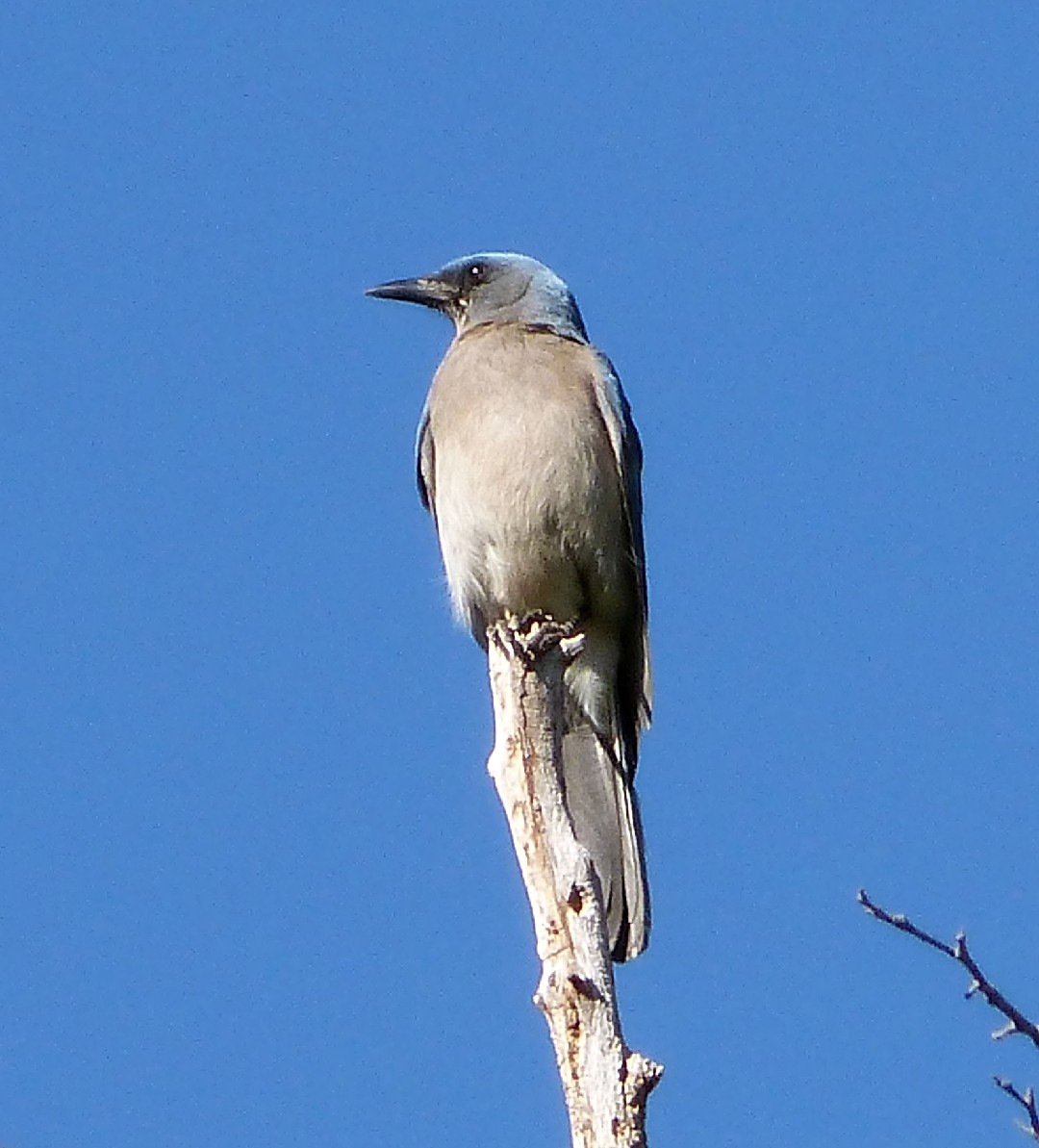Mexican Jay
A species of Scrub Jays, Also known as Gray-breasted Jay Scientific name : Aphelocoma wollweberi Genus : Scrub Jays
Mexican Jay, A species of Scrub Jays
Also known as:
Gray-breasted Jay
Botanical name: Aphelocoma wollweberi
Genus: Scrub Jays
Content
Description General Info
Description
The Mexican jay is a medium-large (~120 g) passerine similar in size to most other jays, with a blue head, blue-gray mantle, blue wings and tail, and pale gray breast and underparts. The sexes are morphologically similar, and juveniles differ only in having less blue coloration and, in some populations, a pink/pale (instead of black) bill that progressively becomes more black with age (Brown and Horvath 1989). Some field guides misreport this color as yellow because the pale bill becomes yellow in museum study skins. The iris is brown and legs are black. It is most readily distinguished from the similar Woodhouse's scrub-jay by the plain (unstreaked) throat and breast, and the mantle contrasting less with the head and wings. Its range somewhat overlaps with the Woodhouse's scrub-jay, but, where they co-occur, the two species seem to show ecological and morphological character displacement (Curry et al. 2002). 
Size
28-33 cm (11-13 in)
Life Expectancy
10-21 years
Nest Placement
Tree
Clutch Size
1 - 6 eggs
Feeding Habits
Mexican Jay largely consume acorns and pine nuts, which they cache for winter. They hammer acorns while holding them with their feet. In summer, their diet includes various insects, reptiles, amphibians, bird eggs, and nestlings. Rarely, they eat small birds and mice. Foraging occurs in groups, in vegetation and on the ground, and they also catch insects in flight or from spiderwebs. Mexican Jay can eat hairy caterpillars after removing the hairs. They occasionally feed on berries and nectar from agaves.
Habitat
Mexican Jay thrives in mountainous woodlands rich with pine, oak, and juniper trees across broad elevation ranges. Their habitat spans from the desert fringes to high mountainous regions, including desert grasslands and riparian zones with prevalent oaks. They adapt to different altitudes, sometimes exceeding 11,000 feet, especially where oak species and acorns are ample.
Nest Behavior
Male mexican Jay initiates nest building as part of mating rituals. Both sexes contribute to constructing the nest. Egg-laying patterns and timing of nest building are not specified, but parental care includes both male and female nurturing their young.
Nest Characteristics
Mexican Jay's nest is typically constructed 30 feet high in a tree, concealed near the trunk or on a branch fork. The platform-like cup, made from sticks and lined with rootlets, plant fibers, and animal hair, measures about 13 inches in diameter and 3 inches in height, with an interior cup about 5 inches across and 2 inches deep.
Dite type
Omnivorous
General Info
Feeding Habits
Bird food type
Bird Feeder Type

Platform
Sounds
Call
Recording location: Mexico
Call
Recording location: United States
Call
Recording location: United States
Behavior
Mexican Jay exhibit complex social dynamics, forming groups ranging from 5 to 25 individuals. Within these groups, multiple females may build nests and lay eggs, occasionally sharing the same nest. Despite apparent pair-bonding, DNA studies reveal frequent polygamous behavior, with nestlings often sired by males other than the primary partner. Males court females with subdued singing, wing spreading, and food offerings. Although a primary male assists in nesting and guards the female, paternity is not guaranteed, and group members cooperatively feed and raise the young, even when unrelated. Post-fledging, juveniles remain reliant on the group, showing lifelong fidelity to their social unit without maintaining specific pair bonds outside of nesting periods.
Distribution Area
It is native to the Sierra Madre Oriental, Sierra Madre Occidental, and Central Plateau of Mexico as well as eastern Arizona, western New Mexico and western Texas in the United States. Its preferred habitat is montane pine-oak forest. 
Species Status
Not globally threatened.
Scientific Classification
Phylum
Chordates Class
Birds Order
Perching birds Family
Crows and jays Genus
Scrub Jays Species
Mexican Jay 